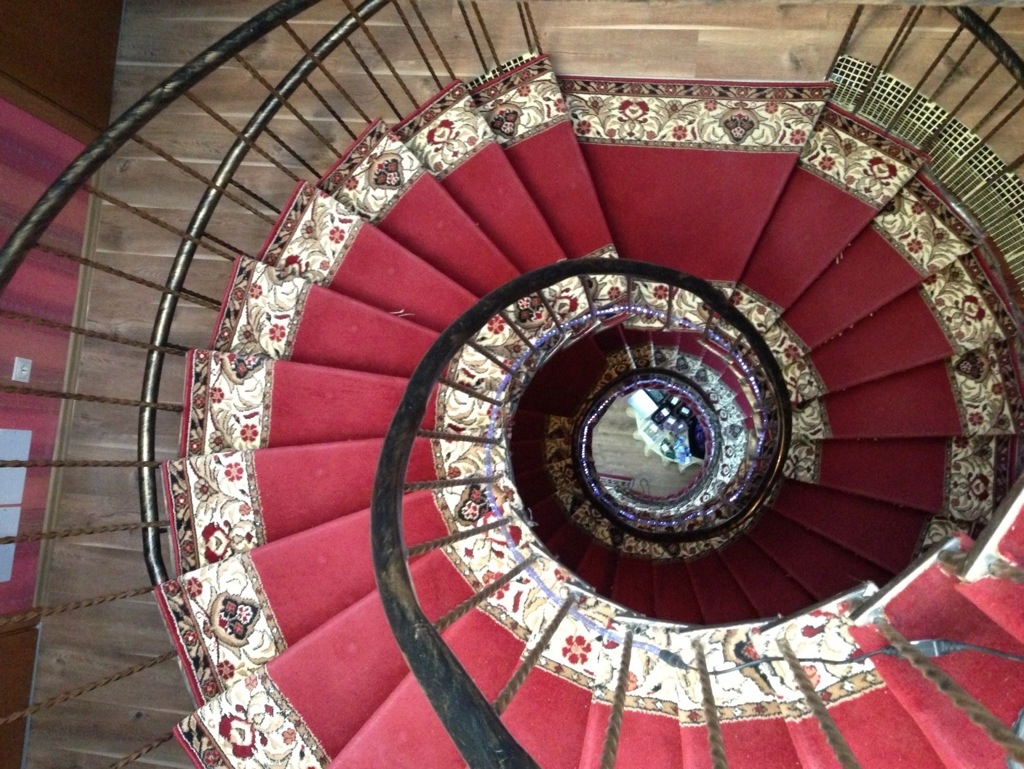 Karina and Artom…two of the beautiful kids we visited.
Karina and Artom…two of the beautiful kids we visited.
The tea here is wonderful. Similar to Russia, Moldavians don’t drink much coffee, but offer it to visitors anyway…hoping you’ll ask for tea instead. I enjoy a nice hot cup of tea at the end of the day while debriefing with the team and checking my email, Facebook and write.
Pulling off my shoes from my tired feet, we discussed some of the things we learned and experienced. We are learning many interesting things on our trip. About Moldova. About the culture here. About their struggles.
About trafficking.
Moldova is an interesting blend of first world and third world lifestyles. Considered to be the poorest country in Europe, it also has the third highest (and most widespread) internet speed in the world. In fact, WiMax is currently installing its 30 megabits per second wireless system in much of Chisanau, connecting everyday people wirelessly to the rest of the world in an unprecedented way. Yet, the poverty in many places is so great, that one third of all Moldavians live outside the country in order to make more money and provide for their families. Two of the families we visited today didn’t have running water in their home, one didn’t have electricity and another didn’t have glass in the bedroom window until recently…only a plastic sheet. Did I mention it snows here in the winter and gets down to zero degrees regularly?
Zero degrees. Snow. And 1 millimeter thick clear plastic between you (and your family) and that zero degrees snow.
Although not all Moldavians live in this kind of poverty, it’s sadly not uncommon. Which is why the youth who are just beginning to look for work, will do nearly anything to get out of the country. The internet has provided a “rest of the world” view and many have decided they will leave the country…at any price.
At any price, means more than 100,000 people have become victims of human trafficking and 30,000 girls have gone missing.
Just…missing.
In a country of 3.5 million, that means nearly 4% of the population has become enslaved or disappeared.
4%…..of an entire population. To put that into perspective, that would be well over 12 million people in the United States.
And here I am…writing on my iPad in a nice warm hotel, with my stomach full, a great cup of tea by my side, and able to video chat with my kids back home without a single blip on the video feed.
The internet really is fast here.
 A view of the stairs in our hotel.
A view of the stairs in our hotel.
Before meeting the girls at the restoration home today, we were given some guidelines (think of them as psychological and social rules for trafficked victims) that would help us better connect and work with them. As victims of severe abuse, many are untrusting of others, don’t make eye contact or prefer to not be near men.
Arriving at the restoration center, a set of two new buildings just outside the main city, we introduced ourselves and began teaching a couple crocheting crafts. Brandy led the teaching and I simply helped with problem solving if someone needed help. A couple of the girls have young babies and were excited to make their own warm hat for their little ones.


The goal was to teach them some new skills that would allow them to make hats and scarves that they could sell, earn money, and build their confidence. Although our time was short, our team feels they will be able to take these skills and build upon them. It will be interesting to see how far they take these ideas and what they will ultimately do with them.
We learned of some of their stories, although never directly from the girls. They’re never asked to share their stories with strangers or in a public setting. Getting a partial tour of the facilities, one of the counselors shared a few of the more horrific stories with us. I share more of what we learned in another post.
Our team consists of five people…two of us are men. In order to make sure the girls never feel any sense of personal space violation, we men were not allowed to tour the inside of the restoration house. Instead, we stayed in the meeting center and continued working with the girls on their hats…laughing with the girls, explaining that these hats were so simple, even a man can do it.
 Here’s a picture of Rob, a member of our team, working on a baby hat.
Here’s a picture of Rob, a member of our team, working on a baby hat.
There’s so much more I want to share….like what else is being done with the 4%.
And what about the other 96%? What are they doing about this? Do they even know and understand what is happening to their own people?









